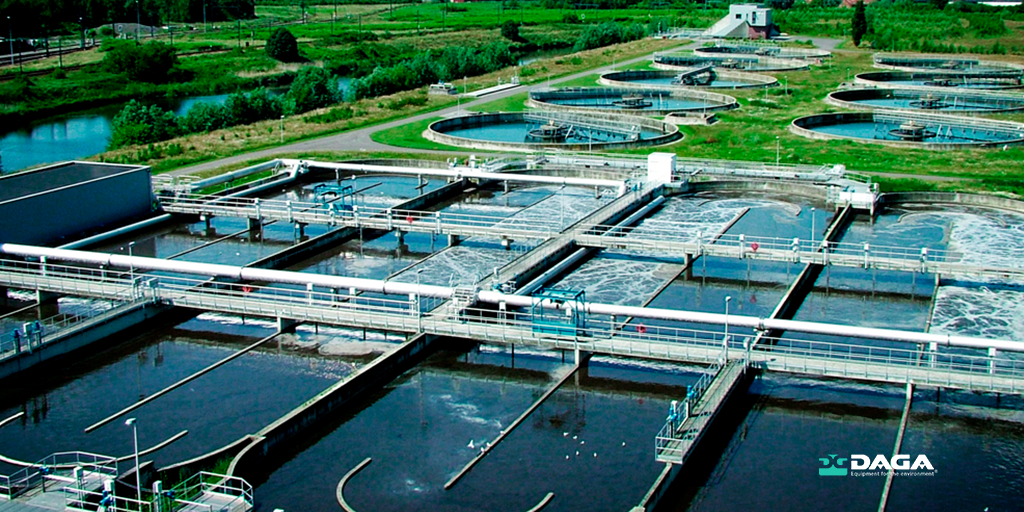
Water is one of the most precious natural resources on our planet. Assuming that organisms - people, animals and vegetation - need it to live, it is understandable that we are (very) interested in preserving it and putting measures on its growing scarcity at a global level.
In DAGA’s blog, we have spoken on different occasions about different projects and measures to promote the reuse of water, especially in the field of wastewater treatment. There are numerous initiatives that have been launched in recent years, thanks, especially, to the application of digitization and new technologies, such as the Internet of Things. Did you know what it is and that the wastewater management sector is already applying it?
In DAGA’s blog, we have spoken on different occasions about different projects and measures to promote the reuse of water, especially in the field of wastewater treatment. There are numerous initiatives that have been launched in recent years, thanks, especially, to the application of digitization and new technologies, such as the Internet of Things. Did you know what it is and that the wastewater management sector is already applying it?
What is the Internet of Things (IoT)?
The IoT (Internet of Things) is the practice of interconnecting different physical objects, devices and spaces to the network. The concept, which emerged in 1999 from British technology pioneer Kevin Ashton, is still catching on today, but it is increasingly developed and installed in most business and industries.
In addition to computers, tablets and mobile phones, the IoT makes it possible to connect household appliances (televisions, refrigerators, washing machines ...), home automation systems, cars, safety systems, medical equipment and industrial machinery to the network and monitor their operation.
Each of the connected devices (also described as "smart") can generate data of all its activity, record it and send it to or receive it from other devices. That is, exchange them in real time. If, later, these data are processed, they allow a great advance in terms of efficiency and results of the operation of each of the objects, which can even perform actions without human assistance, through Artificial Intelligence.
In addition to computers, tablets and mobile phones, the IoT makes it possible to connect household appliances (televisions, refrigerators, washing machines ...), home automation systems, cars, safety systems, medical equipment and industrial machinery to the network and monitor their operation.
Each of the connected devices (also described as "smart") can generate data of all its activity, record it and send it to or receive it from other devices. That is, exchange them in real time. If, later, these data are processed, they allow a great advance in terms of efficiency and results of the operation of each of the objects, which can even perform actions without human assistance, through Artificial Intelligence.
The IoT in wastewater management
Having explained, roughly, what the IoT is, let's imagine that, instead of small devices or appliances, we connect wastewater treatment facilities. With smart sensors placed at different points within the plant system, data can be collected on water quality, potability, temperature variations, pressure changes or leaks, among others. This data is sent to a web platform that synthesizes it and makes the information processable.
This way, engineers and plant personnel can easily and instantly access it. They can then interpret all the data and, if they detect that it is necessary, take action.
The accelerated technological progress experienced in the last decades has led us to leave behind those situations in which all levels had to be verified by hand or that it took hours to detect problem or error. Nowadays, the Internet of Things not only makes it possible to locate an error almost instantly, but also offers the possibility of anticipating it because of the technique of predictive maintenance. By interpreting the data, you can take action in advance and preventive solutions can be applied.
For example, in the field of wastewater management, if a plant uses IoT technology and systems it can detect waste chemicals after primary treatment. By being able to carry out this early trace detection, staff can work on optimizing the entire treatment process of the facility and ensuring that chemical releases are kept within regulatory limits.
This way, engineers and plant personnel can easily and instantly access it. They can then interpret all the data and, if they detect that it is necessary, take action.
The accelerated technological progress experienced in the last decades has led us to leave behind those situations in which all levels had to be verified by hand or that it took hours to detect problem or error. Nowadays, the Internet of Things not only makes it possible to locate an error almost instantly, but also offers the possibility of anticipating it because of the technique of predictive maintenance. By interpreting the data, you can take action in advance and preventive solutions can be applied.
For example, in the field of wastewater management, if a plant uses IoT technology and systems it can detect waste chemicals after primary treatment. By being able to carry out this early trace detection, staff can work on optimizing the entire treatment process of the facility and ensuring that chemical releases are kept within regulatory limits.
The DAGA experience
The Internet of Things is one of the essential bases for “Smart Water” management. In DAGA, we move forward with the vision of being a benchmark in this type of solutions in treatment plants, irrigation systems and industries intensive in water management and to be a leading company both at the European level and worldwide.
Our mission is to optimize the capacity of treatment plants and plants in irrigation or industries and our values, passion for excellence, environmental sustainability, loyalty to employees and customer service.
With more than 60 years of experience in the sector, more than 2,500 installations carried out and present in more than 30 countries spread over the five continents, at DAGA we present ourselves as a reliable and reference partner.
Find out more about us here.
Our mission is to optimize the capacity of treatment plants and plants in irrigation or industries and our values, passion for excellence, environmental sustainability, loyalty to employees and customer service.
With more than 60 years of experience in the sector, more than 2,500 installations carried out and present in more than 30 countries spread over the five continents, at DAGA we present ourselves as a reliable and reference partner.
Find out more about us here.


